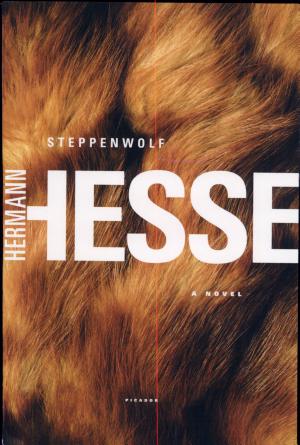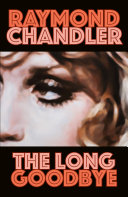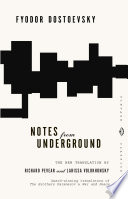
"Steppenwolf" Summary
fiction | 166 pages | Published in 2010
Estimated read time: 5 min read
One Sentence Summary
A tortured intellectual struggles to find meaning and identity amid his divided nature.
Table of Contents
Introduction
"Steppenwolf" is a thought-provoking novel written by Hermann Hesse, a renowned German-Swiss author and Nobel laureate. First published in 1927, the book explores the journey of its main character, Harry Haller, as he navigates the complexities of his existence and grapples with the dichotomy between civilization and his wild, untamed inner nature.
Through its profound themes and introspective narrative, "Steppenwolf" delves into the existential crisis faced by individuals in the modern world.
Brief Synopsis
The novel is set in the 1920s in the vibrant city of Berlin. The protagonist, Harry Haller, is a middle-aged intellectual suffering from an acute sense of alienation and disillusionment. Haller, also known as the "Steppenwolf," feels like an outcast in the bourgeois society due to his inability to conform to the norms and values of his time.
Haunted by intense loneliness, Haller contemplates suicide, feeling trapped within the confines of his own existence. However, his encounter with a mysterious and enigmatic woman named Hermine changes the course of his life. She introduces him to a world of pleasure, sensuality, and self-discovery.
Through various encounters and experiences, Haller begins to embrace his dual nature, symbolized by the image of the "Steppenwolf." He oscillates between his rational, intellectual side and his more primal, instinctual self. As he delves deeper into this journey of self-discovery, he uncovers hidden aspects of his psyche and starts to reconcile with the contradictions within himself.
Main Characters
| Name | Description |
|---|---|
| Harry Haller | The protagonist, an introspective intellectual |
| Hermine | Mysterious woman who introduces Haller to a new way of life |
| Pablo | A musician who inspires Haller with his free-spiritedness |
| Maria | A young, naive prostitute who touches Haller's heart |
Main Events
- Introduction of Harry Haller: The novel begins by introducing the reader to the life of Harry Haller, an introverted and melancholic intellectual. Haller struggles with his place in society, feeling like an outsider in the midst of the bourgeoisie.
- Haller's encounter with Hermine: Haller meets Hermine, an enigmatic woman who invites him to a dance. Through her, Haller discovers a newfound sense of joy and sensuality, embracing a more liberated way of life.
- Exploration of the Magic Theater: Hermine guides Haller to a magical space called the Magic Theater. Within this surreal realm, Haller experiences various hallucinatory and symbolic events that force him to confront his fears, desires, and inner contradictions.
- Haller's transformative experiences: As the story progresses, Haller participates in various transformative experiences, including encounters with Pablo, a free-spirited musician, and Maria, a naive prostitute. These encounters challenge Haller to confront his own desires, passions, and the limitations he has imposed upon himself.
- The reconciliation of the dual nature: Through his experiences and introspection, Haller ultimately comes to terms with his dual nature as the "Steppenwolf." He recognizes that his wild, untamed inner self must coexist with his intellectual aspects, ultimately leading to a sense of self-acceptance and spiritual enlightenment.
Themes and Insights
1. Identity and Alienation: "Steppenwolf" deeply explores the themes of identity and alienation. Haller's struggles with his place in society and his inability to fit into societal norms reflect the broader anxieties of individuals grappling with their true selves in a rapidly changing world.
2. Existential Crisis: The book delves into the existential crisis faced by Haller and individuals like him. Through his journey and introspection, Haller questions the meaning of life, the dichotomy between civilization and the untamed wilderness within, and the pursuit of personal authenticity.
3. Dualism and Integration: Hesse explores the duality of human nature, represented by Haller's inner wolf and his intellectual side. The novel emphasizes the importance of integrating these seemingly contradictory aspects instead of repressing or denying them.
4. Self-Discovery and Transformation: "Steppenwolf" highlights the transformative power of self-discovery. Through his encounters and experiences, Haller undergoes a profound transformation, embracing his passions, desires, and the complexities of his inner self.
Reader's Takeaway
"Steppenwolf" is a compelling and introspective novel that prompts readers to reflect on their own sense of identity, the conflicts within themselves, and the pursuit of personal authenticity. It explores the complexity and contradictions of human nature, provoking thought and encouraging self-reflection. While it can be a challenging read, the rewards lie in the profound insights it offers into the human condition.
Conclusion
Hermann Hesse's "Steppenwolf" is a captivating and philosophical novel that explores the existential crisis faced by its protagonist, Harry Haller. Set in the vibrant city of Berlin, the book takes readers on a journey of self-discovery, delving into the complexities of human nature and the struggle for personal authenticity. Through its exploration of identity, alienation, and transformation, "Steppenwolf" prompts readers to reflect on their own lives and the pursuit of personal meaning.
Steppenwolf FAQ
What is the book 'Steppenwolf' about?
Who is the author of 'Steppenwolf'?
When was 'Steppenwolf' first published?
Is 'Steppenwolf' a work of fiction or non-fiction?
What genre does 'Steppenwolf' belong to?
Is 'Steppenwolf' a standalone book or part of a series?
What are the main themes explored in 'Steppenwolf'?
Who would enjoy reading 'Steppenwolf'?
Are there any film adaptations of 'Steppenwolf'?
What is the general consensus of critics about 'Steppenwolf'?




